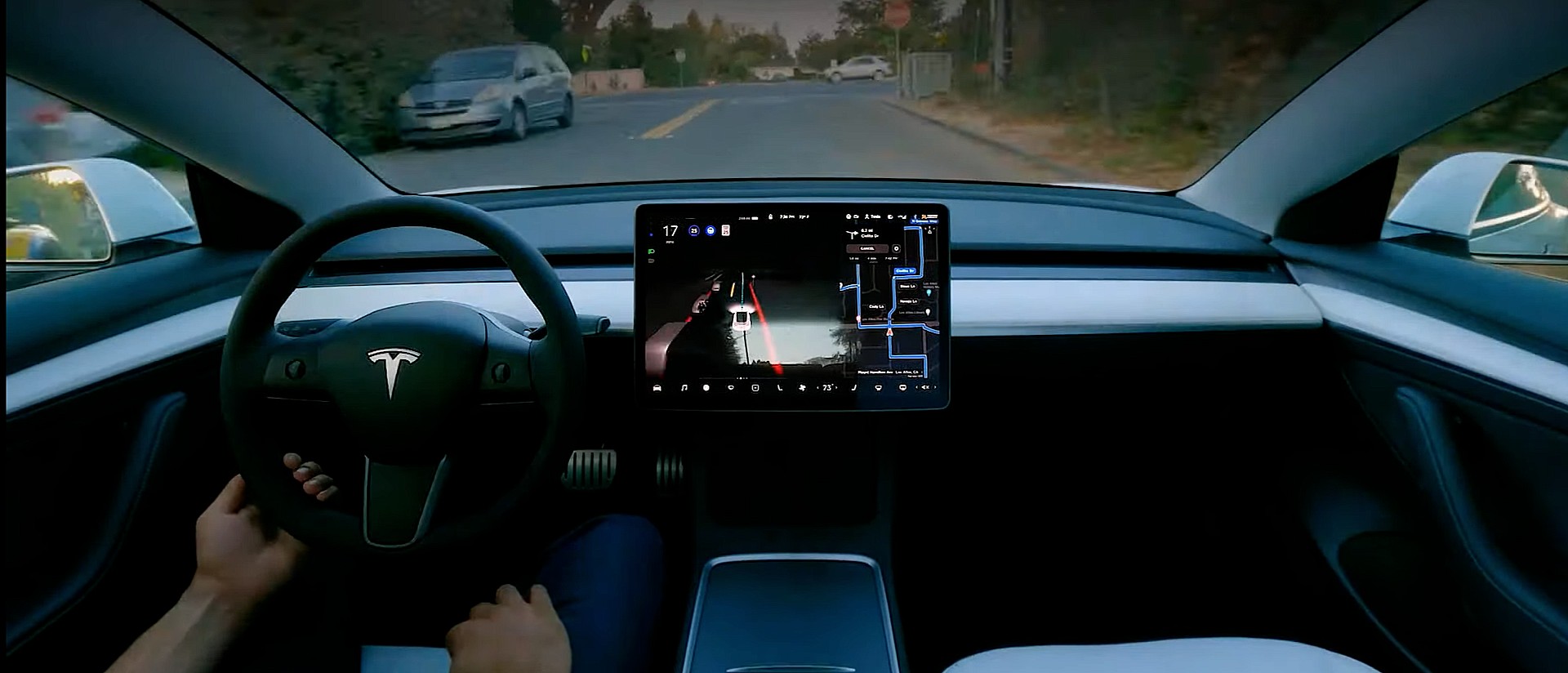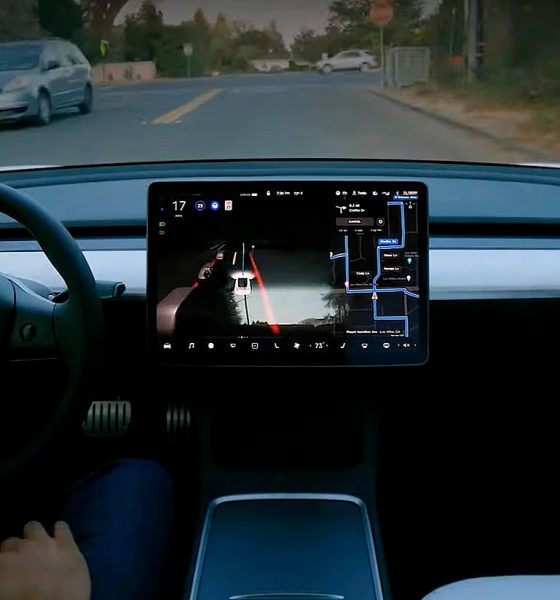This is a preview from our weekly newsletter. Each week I go ‘Beyond the News’ and handcraft a special edition that includes my thoughts on the biggest stories, why it matters, and how it could impact the future.
Earlier this week, NTSB Chief Jennifer Homendy made some disparaging comments regarding Tesla’s use of “Full Self-Driving” to explain its semi-autonomous driving suite. The remarks from Homendy show that Tesla may not have a fair chance when it ultimately comes to proving the effectiveness of its FSD program, especially considering agency officials, who should remain impartial, are already making misdirected comments regarding the name of the suite.
In an interview with the Wall Street Journal, Homendy commented on the company’s use of the phrase “Full Self-Driving.” While Tesla’s FSD suite is admittedly not capable of Level 5 autonomy, the idea for the program is to eventually roll out a fully autonomous driving program for those who choose to invest in the company’s software. However, instead of focusing on the program’s effectiveness and commending Tesla, arguably the leader in self-driving developments, Homendy concentrates on the terminology.
Homendy said Tesla’s use of the term “Full Self-Driving” was “misleading and irresponsible,” despite the company confirming with each driver who buys the capability that the program is not yet fully autonomous. Drivers are explicitly told to remain vigilant and keep their hands on the wheel at all times. It is a requirement to use Autopilot or FSD, and failure to do so can result in being locked in “Autopilot jail” for the duration of your trip. Nobody wants that.
However, despite the way some media outlets and others describe Tesla’s FSD program, the company’s semi-autonomous driving functionalities are extraordinarily safe and among the most complex on the market. Tesla is one of the few companies attempting to solve the riddle that is self-driving, and the only to my knowledge that has chosen not to use LiDAR in its efforts. Additionally, Tesla ditched radar just a few months ago in the Model Y and Model 3, meaning cameras are the only infrastructure the company plans to use to keep its cars moving. Several drivers have reported improvements due to the lack of radar.
These comments regarding FSD and Autopilot are simple: The terminology is not the focus; the facts are. The truth is, Tesla Autopilot recorded one of its safest quarters, according to the most recently released statistics that outlined an accident occurring on Autopilot just once every 4.19 million miles. The national average is 484,000 miles, the NHTSA says.
It isn’t to say that things don’t happen. Accidents on Autopilot and FSD do occur, and the NHTSA is currently probing twelve incidents that have shown Autopilot to be active during an accident. While the conditions and situations vary in each accident, several have already been proven to be the result of driver negligence, including a few that had drivers operating a vehicle without a license or under the influence of alcohol. Now, remind me: When a BMW driver is drunk and crashes into someone, do we blame BMW? I’ll let that rhetorical question sink in.
Of course, Homendy has a Constitutional right to say whatever is on her mind. It is perfectly reasonable to be skeptical of self-driving systems. I’ll admit, the first time I experienced one, I was not a fan, but it wasn’t because I didn’t trust it. It was because I was familiar with controlling a vehicle and not having it manage things for me. However, just like anything else, I adjusted and got used to the idea, eventually becoming accustomed to the new feelings and sensations of having my car assist me in navigating to my destination.
To me, it is simply unfortunate for an NTSB official to claim that Tesla “has clearly misled numerous people to misuse and abuse technology.” One, because it isn’t possible, two, because it would be a massive liability for the company, and three, because Tesla has never maintained that its cars can drive themselves. Tesla has never claimed that its cars can drive themselves, nor has Tesla ever advised a driver to attempt a fully autonomous trek to a destination.
The numerous safety features and additions to the FSD suite have only solidified Tesla’s position as one of the safest car companies out there. With in-cabin cameras to test driver attentiveness and numerous other safety thresholds that drivers must respond to with the correct behaviors, Tesla’s FSD suite and its Autopilot program are among the safest around. It isn’t favorable for NTSB head Homendy to comment in this way, especially as it seems to be detrimental to not only Tesla’s attempts to achieve Level 5 autonomy but the entire self-driving effort as a whole.
A big thanks to our long-time supporters and new subscribers! Thank you.
I use this newsletter to share my thoughts on what is going on in the Tesla world. If you want to talk to me directly, you can email me or reach me on Twitter. I don’t bite, be sure to reach out!
-Joey

Elon Musk
Elon Musk’s X will start using a Tesla-like software update strategy
The initiative seems designed to accelerate updates to the social media platform, while maintaining maximum transparency.

Elon Musk’s social media platform X will adopt a Tesla-esque approach to software updates for its algorithm.
The initiative seems designed to accelerate updates to the social media platform, while maintaining maximum transparency.
X’s updates to its updates
As per Musk in a post on X, the social media company will be making a new algorithm to determine what organic and advertising posts are recommended to users. These updates would then be repeated every four weeks.
“We will make the new 𝕏 algorithm, including all code used to determine what organic and advertising posts are recommended to users, open source in 7 days. This will be repeated every 4 weeks, with comprehensive developer notes, to help you understand what changed,” Musk wrote in his post.
The initiative somewhat mirrors Tesla’s over-the-air update model, where vehicle software is regularly refined and pushed to users with detailed release notes. This should allow users to better understand the details of X’s every update and foster a healthy feedback loop for the social media platform.
xAI and X
X, formerly Twitter, has been acquired by Elon Musk’s artificial intelligence startup, xAI last year. Since then, xAI has seen a rapid rise in valuation. Following the company’s the company’s upsized $20 billion Series E funding round, estimates now suggest that xAI is worth tens about $230 to $235 billion. That’s several times larger than Tesla when Elon Musk received his controversial 2018 CEO Performance Award.
As per xAI, the Series E funding round attracted a diverse group of investors, including Valor Equity Partners, Stepstone Group, Fidelity Management & Research Company, Qatar Investment Authority, MGX, and Baron Capital Group, among others. Strategic partners NVIDIA and Cisco Investments also continued support for building the world’s largest GPU clusters.
News
Tesla FSD Supervised wins MotorTrend’s Best Driver Assistance Award
The decision marks a notable reversal for the publication from prior years, with judges citing major real-world improvements that pushed Tesla’s latest FSD software ahead of every competing ADAS system.

Tesla’s Full Self-Driving (Supervised) system has been named the best driver-assistance technology on the market, earning top honors at the 2026 MotorTrend Best Tech Awards.
The decision marks a notable reversal for the publication from prior years, with judges citing major real-world improvements that pushed Tesla’s latest FSD software ahead of every competing ADAS system. And it wasn’t even close.
MotorTrend reverses course
MotorTrend awarded Tesla FSD (Supervised) its 2026 Best Tech Driver Assistance title after extensive testing of the latest v14 software. The publication acknowledged that it had previously criticized earlier versions of FSD for erratic behavior and near-miss incidents, ultimately favoring rivals such as GM’s Super Cruise in earlier evaluations.
According to MotorTrend, the newest iteration of FSD resolved many of those shortcomings. Testers said v14 showed far smoother behavior in complex urban scenarios, including unprotected left turns, traffic circles, emergency vehicles, and dense city streets. While the system still requires constant driver supervision, judges concluded that no other advanced driver-assistance system currently matches its breadth of capability.
Unlike rival systems that rely on combinations of cameras, radar, lidar, and mapped highways, Tesla’s FSD operates using a camera-only approach and is capable of driving on city streets, rural roads, and freeways. MotorTrend stated that pure utility, the ability to handle nearly all road types, ultimately separated FSD from competitors like Ford BlueCruise, GM Super Cruise, and BMW’s Highway Assistant.
High cost and high capability
MotorTrend also addressed FSD’s pricing, which remains significantly higher than rival systems. Tesla currently charges $8,000 for a one-time purchase or $99 per month for a subscription, compared with far lower upfront and subscription costs from other automakers. The publication noted that the premium is justified given FSD’s unmatched scope and continuous software evolution.
Safety remained a central focus of the evaluation. While testers reported collision-free operation over thousands of miles, they noted ongoing concerns around FSD’s configurable driving modes, including options that allow aggressive driving and speeds beyond posted limits. MotorTrend emphasized that, like all Level 2 systems, FSD still depends on a fully attentive human driver at all times.
Despite those caveats, the publication concluded that Tesla’s rapid software progress fundamentally reshaped the competitive landscape. For drivers seeking the most capable hands-on driver-assistance system available today, MotorTrend concluded Tesla FSD (Supervised) now stands alone at the top.
News
Elon Musk’s Grokipedia surges to 5.6M articles, almost 79% of English Wikipedia
The explosive growth marks a major milestone for the AI-powered online encyclopedia, which was launched by Elon Musk’s xAI just months ago.

Elon Musk’s Grokipedia has grown to an impressive 5,615,201 articles as of today, closing in on 79% of the English Wikipedia’s current total of 7,119,376 articles.
The explosive growth marks a major milestone for the AI-powered online encyclopedia, which was launched by Elon Musk’s xAI just months ago. Needless to say, it would only be a matter of time before Grokipedia exceeds English Wikipedia in sheer volume.
Grokipedia’s rapid growth
xAI’s vision for Grokipedia emphasizes neutrality, while Grok’s reasoning capabilities allow for fast drafting and fact-checking. When Elon Musk announced the initiative in late September 2025, he noted that Grokipedia would be an improvement to Wikipedia because it would be designed to avoid bias.
At the time, Musk noted that Grokipedia “is a necessary step towards the xAI goal of understanding the Universe.”
Grokipedia was launched in late October, and while xAI was careful to list it only as Version 0.1 at the time, the online encyclopedia immediately earned praise. Wikipedia co-founder Larry Sanger highlighted the project’s innovative approach, noting how it leverages AI to fill knowledge gaps and enable rapid updates. Netizens also observed how Grokipedia tends to present articles in a more objective manner compared to Wikipedia, which is edited by humans.
Elon Musk’s ambitious plans
With 5,615,201 total articles, Grokipedia has now grown to almost 79% of English Wikipedia’s article base. This is incredibly quick, though Grokipedia remains text-only for now. xAI, for its part, has now updated the online encyclopedia’s iteration to v0.2.
Elon Musk has shared bold ideas for Grokipedia, including sending a record of the entire knowledge base to space as part of xAI’s mission to preserve and expand human understanding. At some point, Musk stated that Grokipedia will be renamed to Encyclopedia Galactica, and it will be sent to the cosmos.
“When Grokipedia is good enough (long way to go), we will change the name to Encyclopedia Galactica. It will be an open source distillation of all knowledge, including audio, images and video. Join xAI to help build the sci-fi version of the Library of Alexandria!” Musk wrote, adding in a later post that “Copies will be etched in stone and sent to the Moon, Mars and beyond. This time, it will not be lost.”










